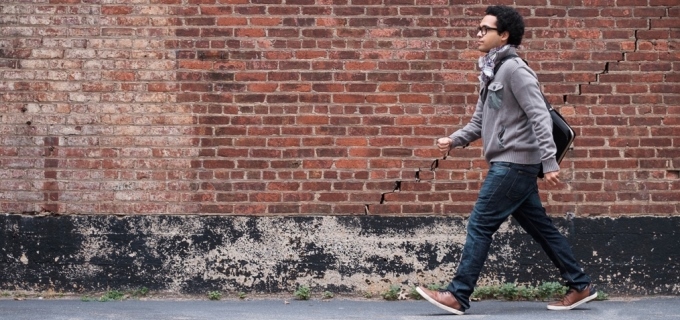Search for a doctor or hospital in your network.


Search for a doctor or hospital in your network.

Get News & Updates Directly To Your Inbox
 Not being active can be dangerous for your health. Inactivity raises the chance of getting serious health problems like heart disease and diabetes. Yet 1 in 2 adults — and 77 percent of high school students — don’t get enough physical activity.
Not being active can be dangerous for your health. Inactivity raises the chance of getting serious health problems like heart disease and diabetes. Yet 1 in 2 adults — and 77 percent of high school students — don’t get enough physical activity.The good news: getting more exercise doesn’t have to take a lot of time. You can find ways to add physical activity to your day, no matter how busy you are. The payoff can be a healthier body and mind.
People of all ages can benefit from more physical activity. Any amount of physical activity has some benefits, says the Centers for Disease Control and Prevention. ![]() People who sit less and do any amount of moderate to vigorous physical activity gain some health benefits.
People who sit less and do any amount of moderate to vigorous physical activity gain some health benefits.
In addition to helping prevent illness and injury, being active can make your life better each day. More activity can:
The key is to just get started. Everyone needs both aerobic and muscle-strengthening movement. You can start by looking for ways to stand a bit more, take a few more steps, add some stretching into your chores. You can find ways to move more throughout your day.
Then when you have a few minutes, you can start doing more. Try walking five minutes each hour. You can walk around your home or office. You can even multitask by walking during a phone call or online meeting. You can even get a mini workout when you do your household chores. It all adds up.
If you’re planning to start new fitness efforts, talk to your doctor about what is best for you, especially if you have health issues. But basics like walking and stretching are safe for most people. But if you have symptoms like chest pain, unexplained fatigue or shortness of breath during or after activity, call your doctor right away.
Doing different types of exercises can keep you from getting bored. More importantly, it can expand the range of benefits you’ll experience. ![]()
Try to include activities in your routine from these four categories:
Most adults should aim for moderate aerobic movement for at least 150 minutes each week. Activity can be spread out so you can fit it into your schedule. Aim for at least twice a week for strengthening activities. For balance and flexibility training, spend a few minutes several times a week or daily.
Get more ideas, including tips for children, seniors and people with physical challenges or medical conditions, from Move Your Way. ![]()
Whatever activity you chose to do, just get started now. Even short periods of physical activity done regularly can have a positive impact on your health and your quality of life.
Blue Cross and Blue Shield of Illinois, a Division of Health Care Service Corporation,
a Mutual Legal Reserve Company, an Independent Licensee of the Blue Cross and Blue Shield Association
© Copyright 2026 Health Care Service Corporation. All Rights Reserved.
Verint is an operating division of Verint Americas, Inc., an independent company that provides and hosts an online community platform for blogging and access to social media for Blue Cross and Blue Shield of Illinois.
![]() File is in portable document format (PDF). To view this file, you may need to install a PDF reader program. Most PDF readers are a free download. One option is Adobe® Reader® which has a built-in screen reader. Other Adobe accessibility tools and information can be downloaded at https://www.adobe.com/trust/accessibility.html.
File is in portable document format (PDF). To view this file, you may need to install a PDF reader program. Most PDF readers are a free download. One option is Adobe® Reader® which has a built-in screen reader. Other Adobe accessibility tools and information can be downloaded at https://www.adobe.com/trust/accessibility.html. ![]()
![]() You are leaving this website/app ("site"). This new site may be offered by a vendor or an independent third party. The site may also contain non-Medicare related information. Some sites may require you to agree to their terms of use and privacy policy.
You are leaving this website/app ("site"). This new site may be offered by a vendor or an independent third party. The site may also contain non-Medicare related information. Some sites may require you to agree to their terms of use and privacy policy.
Powered by Verint